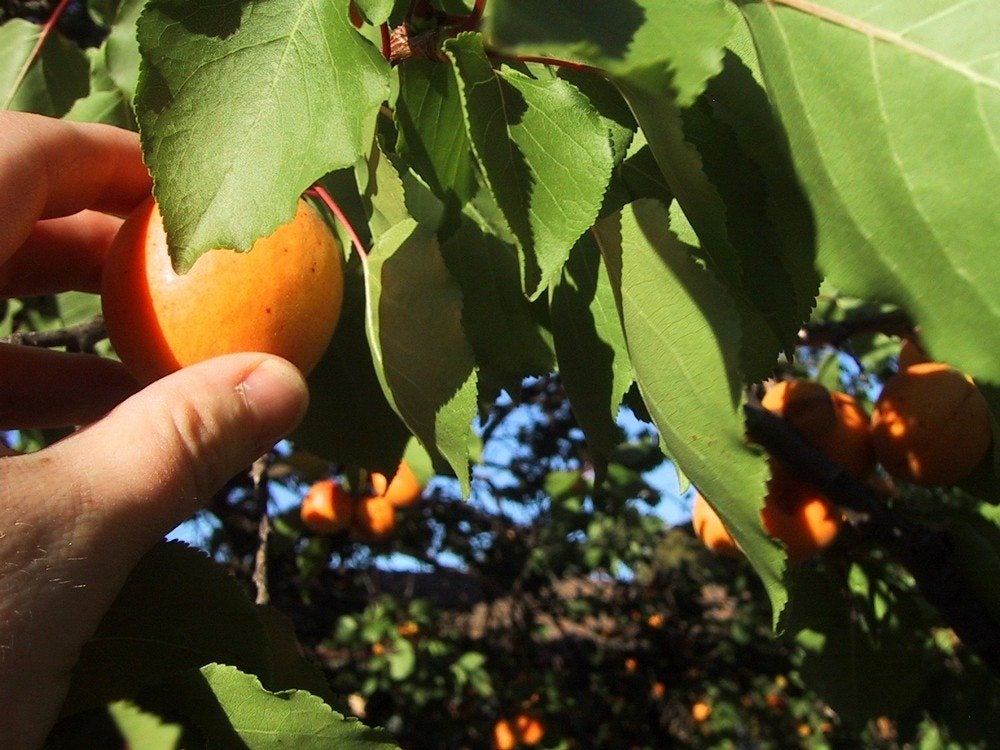Picking Apricots: When And How To Harvest An Apricot

Native to China, apricots have been cultivated for over 4,000 years, although today the United States outranks China in production. At this time, the United States commercially grows about 90 percent of the world's apricots, with most apricot storage and production centering in California. An excellent source of beta-carotene (vitamin A) and vitamin C, iron, potassium, and fiber, the questions addressed herein pertain to apricot harvest: when to harvest apricots and how to harvest an apricot.
How and When to Pick Apricots
Apricot harvest is best accomplished when they are completely ripe on the tree. The ripening period of the fruit may extend over a three week period for some varieties, so picking apricots may span this time frame. You will know when to pick apricots visually once the fruits change from green to yellowish orange in color and feel slightly softened, but still firm to the touch. The exact hue varies according to cultivar but regardless of the variety, all apricots soften extremely quickly, making them vulnerable to bruising and subsequent rotting. Gently pick the ripened fruits from the tree.
Apricot Storage
The resulting apricot harvest will keep for approximately one to three weeks stored in a cool location and free from damaging factors such as additional weight upon the fruit, which may result in bruises and decay. The fruit is best stored in a single layer to minimize potential damage due to bruising. Due to the high risk for damage to apricot storage, maintain temperature in the 31 to 32 degree F. (-.5 to 0 C.) range for long-term storage with a relative humidity of 90 to 91 percent. Also with apricot storage, do not store them with any other fruit which give off an appreciative amount of ethylene, as this will cause the fruit to age more quickly and may encourage the growth of decay causing fungus as well. For apricot storage once the fruit has been cut into, browning in the midst of preparing for freezing, canning, pie making or what have you, can be avoided if you place the apricots in a solution of 3 grams of ascorbic acid to 1 gallon (3.8 L.) of cold water. Ascorbic acid can be obtained either as a powdered form, vitamin C tablets, or in a commercial mixture sold in supermarkets to control fruit browning. You may also decide to freeze the apricot harvest. First wash, halve, and pit the fruit and then peel and slice or if unpeeled, heat in boiling water for half a minute. This will keep skins from getting tough in the freezer. Cool the blanched apricots in cold water, drain, and toss with a bit of the ascorbic acid. Then either freeze directly or in a syrup or sugar mixture (mix the ascorbic acid with 2/3 cup sugar), or puree prior to freezing. Package the prepared apricots, labeled, in Ziploc type bags with the air removed or in a freezer container with ½ inch (1 cm.) space remaining and covered with a piece of freezer wrap to prevent discoloration.
Sign up for the Gardening Know How newsletter today and receive a free copy of our e-book "How to Grow Delicious Tomatoes".

Amy Grant has been gardening for 30 years and writing for 15. A professional chef and caterer, Amy's area of expertise is culinary gardening.
